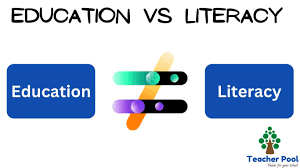Teaching kids about money might not seem as exciting as a day at the amusement park, but it can actually be just as fun—if you do it right! According to the National Endowment for Financial Education, only 17% of high school students said they had taken a personal finance class. This lack of financial literacy can lead to detrimental habits in adulthood, such as accumulating debt and struggling with budgeting. So, how do we equip the next generation with the essential tools they need to navigate their financial world?
In this blog post, we’ll dive into seven engaging activities that can teach your kids valuable money lessons while keeping the fun alive. But before we embark on this money adventure, ask yourself: Are you setting your children up for financial success in their adult lives?
—
Activity 1: Create a Family Budget Together

Statistics and Facts:
A study by the University of Utah found that children who participated in family budgeting activities were 25% more likely to manage their finances effectively as adults
How To Create a Family Budget Together:
– Gather your family and explain the concept of a budget: income vs. expenses.
– Use real-life scenarios such as planning for a family outing or a grocery shopping trip.
– Allow your kids to suggest budget-friendly options to make the activity interactive.
Benefits of Creating A Budget Together
– Introduces the concept of saving and prioritizing needs vs. wants.
– Provides hands-on experience with planning and decision-making.
—
Activity 2: Play Money-Themed Board Games
Statistics and Facts:
According to research published in the Journal of Economic Education, students who engaged in simulation-based learning scored 20% higher on financial literacy assessments.
How To:
Choose board games that emphasize financial concepts, such as “Monopoly” or “The Game of Life.”
- Monopoly: Teach about property, investments, and managing resources.
- The Game of Life: Discuss life choices that affect earnings and expenses.
Benefits:
– Reinforces essential skills like critical thinking and strategic planning.
– Offers a fun way to learn about the complexities of financial decisions.
—
Activity 3: Start a Savings Challenge
Statistics and Facts:
A survey conducted by Junior Achievement revealed that kids who actively participated in savings challenges saved an average of 50% more than their peers.
How To:
Set up a savings jar or piggy bank and decide on a savings goal (e.g., saving for a toy or family outing).
– Specify a time frame (like one month) and track progress visually.
– Consider implementing mini-challenges, like saving a dollar for every chore done.
Benefits:
– Fosters a sense of accomplishment and responsibility.
– Introduces the delayed gratification concept, crucial for financial well-being.
—
Activity 4: Organize a Community Lemonade Stand
Statistics and Facts:
The Lemonade Stand Project reports that 75% of kids who run a lemonade stand learn important entrepreneurial skills.
Help your kids set up a lemonade stand in your neighborhood.
How To:
– Involve them in pricing, budgeting for ingredients, and marketing their product.
– Discuss how profits can be used for savings or a fun activity.
Benefits:
– Encourages teamwork and communication.
– Provides real-world experience on how to earn and manage money.
—
Activity: Visit a Bank
Statistics and Facts:
In a 2022 report by the American Bankers Association, 68% of parents believe discussing banking with children positively impacts their understanding of finances.
How To:
Plan a trip to your local bank or credit union.
– Ask a representative to explain how banks work, savings accounts, and interest.
– Introduce the concept of earning money through interest on savings.
Benefits:
– Breaks down the intimidating world of banking into relatable terms.
– Helps kids understand where their money goes and how it can grow.
—
Activity 6: Create a Family Investment Portfolio
Statistics and Facts:
Research from the University of California, Berkeley, shows that children who understand basic investment concepts are 40% more likely to start investing in their early adulthood.
How To:
Given the growing trend toward financial literacy, create a mock investment portfolio.
– Research stocks or mutual funds you’d be interested in.
– Discuss the concepts of risk and reward in a simplified manner.
Benefits:
– Teaches fundamentals such as diversification and long-term planning.
– Instills confidence in making future financial decisions.
—
Activity 7: Use Apps for Budgeting and Saving
Statistics and Facts:
A survey from The Next Generation of Personal Finance indicates that millennials and Gen Zers are more likely to use budgeting apps—about 60% of this demographic!
How To:
Introduce your children to simple budgeting apps or online savings tools.
– Discuss the concept of tracking expenses digitally.
– Set up a savings goal using a child-friendly app that tracks progress.
Benefits:
– Familiarizes kids with technology and financial management.
– Prepares them for a tech-oriented financial future.
—
Teaching kids about money is an ongoing journey filled with lessons, laughter, and opportunities for growth. By incorporating these fun and engaging activities into your routine, you’re not just discussing money; you’re building a foundation for their future financial health. As you embark on this exciting journey with your kids, know that the skills they learn now will serve them throughout their lives. So where do you begin?
—
FAQs
Q1. At what age should I start teaching my kids about money?
A: Research suggests starting as early as age 3, where basic concepts like saving can be introduced through playful activities.
Q2. Should I discuss financial failures with my kids?
A: Absolutely, discussing mistakes can help kids learn valuable lessons without facing the consequences themselves.
Q3. Are there any children’s books on financial literacy?
A: Yes, books like “The Berenstain Bears’ Dollars and Sense” or “Money Ninja” are excellent resources.
Q4. Is it too late to teach my teenager about money?
A: It’s never too late! Teenagers are often more receptive when they can see the real-world impact of financial decisions.
Q5. How often should we engage in money discussions with kids?
A: Make it a regular part of your family conversations, ideally at least once a week.
By investing time in teaching your children about money through fun activities, you’re giving them a legacy of financial knowledge that could positively impact their future. So, roll up your sleeves and embark on this financially savvy journey together!









sjx55q
cr1qy9
f1joud
it3adl